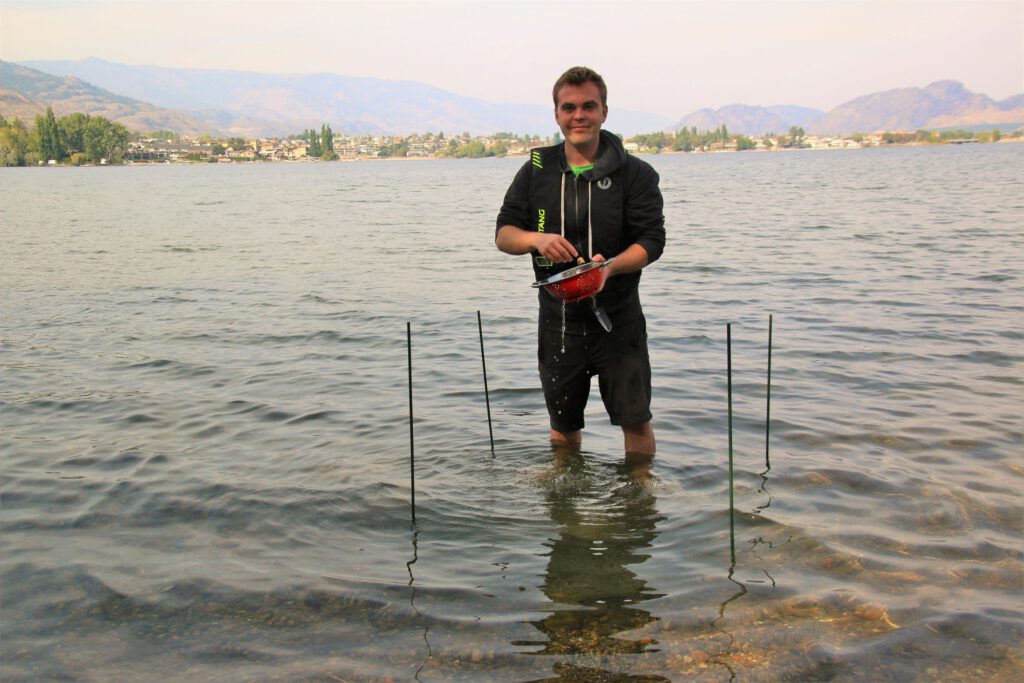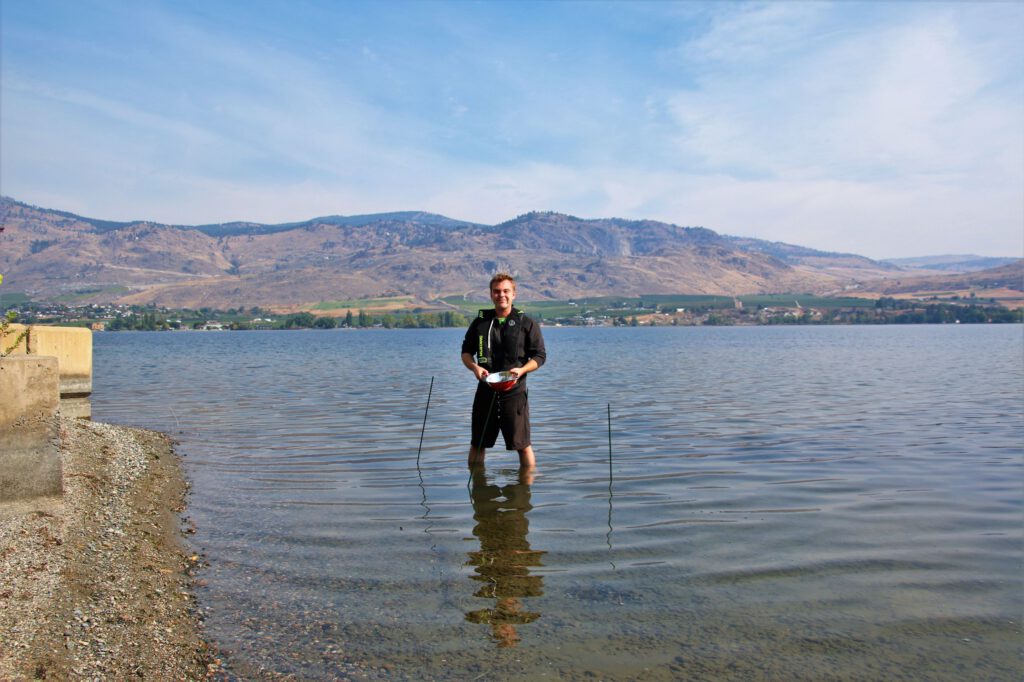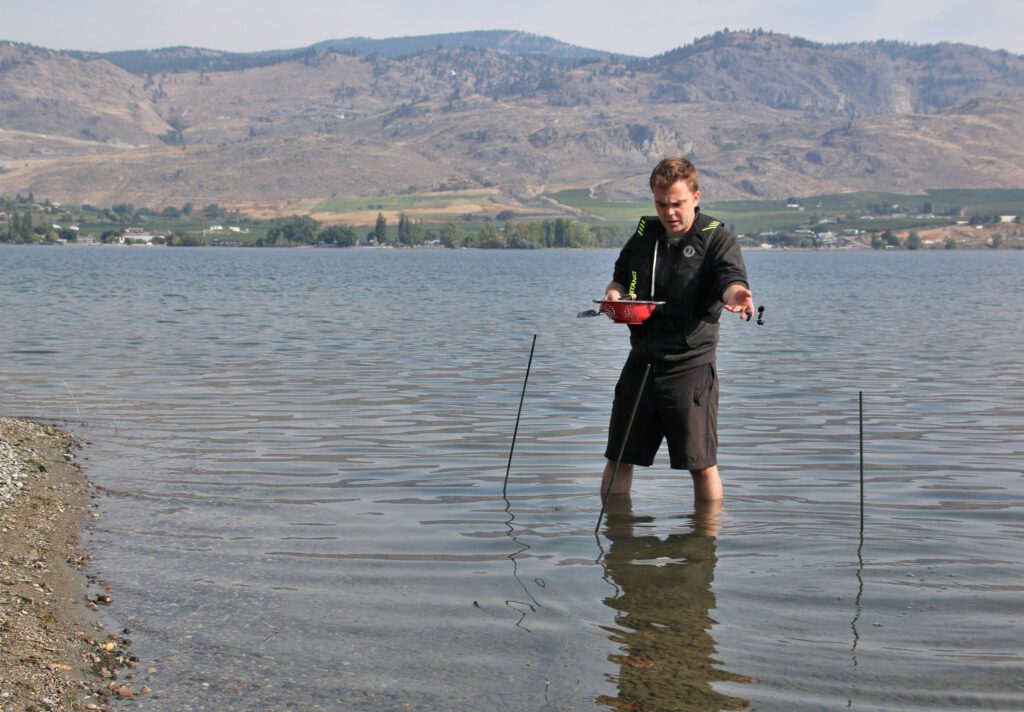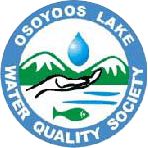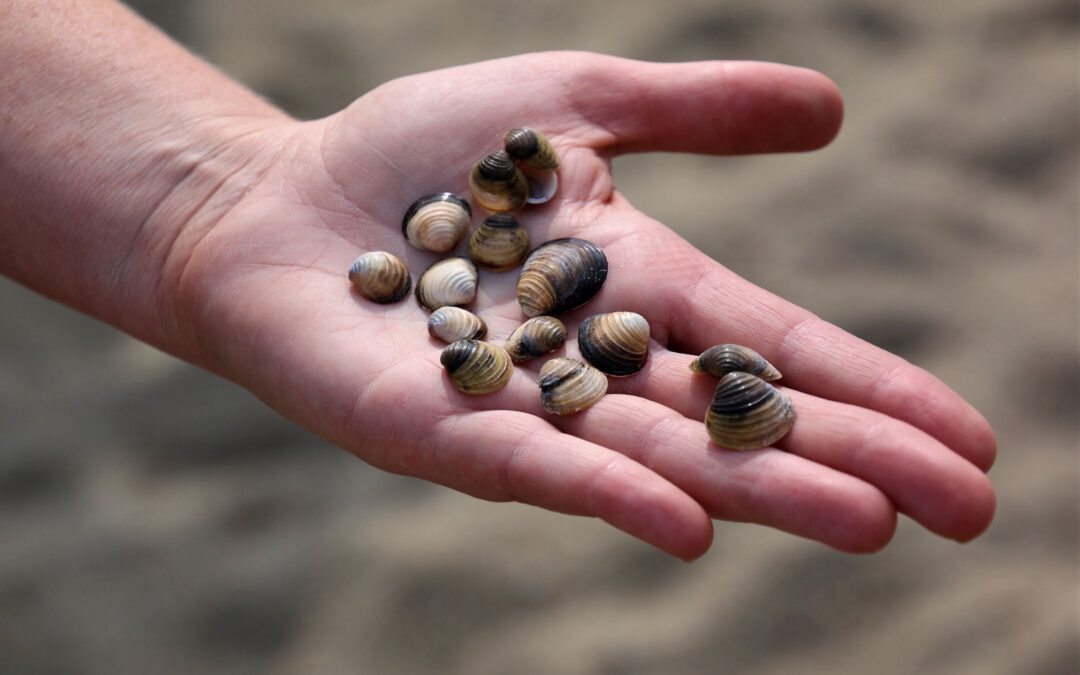A combined effort from members of both OASISS (Okanagan and Similkameen Invasive Species Society) and OLWQS (Osoyoos Lake Water Quality Society) did multiple sample testings at six locations on the Canadian side of Osoyoos Lake on Friday October 7, 2022. Thankfully, no invasive clams were found.
For the second consecutive year, OASISS provide training of volunteers from the Osoyoos Lake Water Quality Society.
The six areas involved in the Invasive Clam Sampling included: Gyro Beach; Legion Beach; Shady Lagoon (Adjacent to USA/Canada border); Osoyoos Cottages Beach; Public Beach beside Cottonwood Park; and the shoreline of sẁiẁs Provincial Park (Haynes Point).
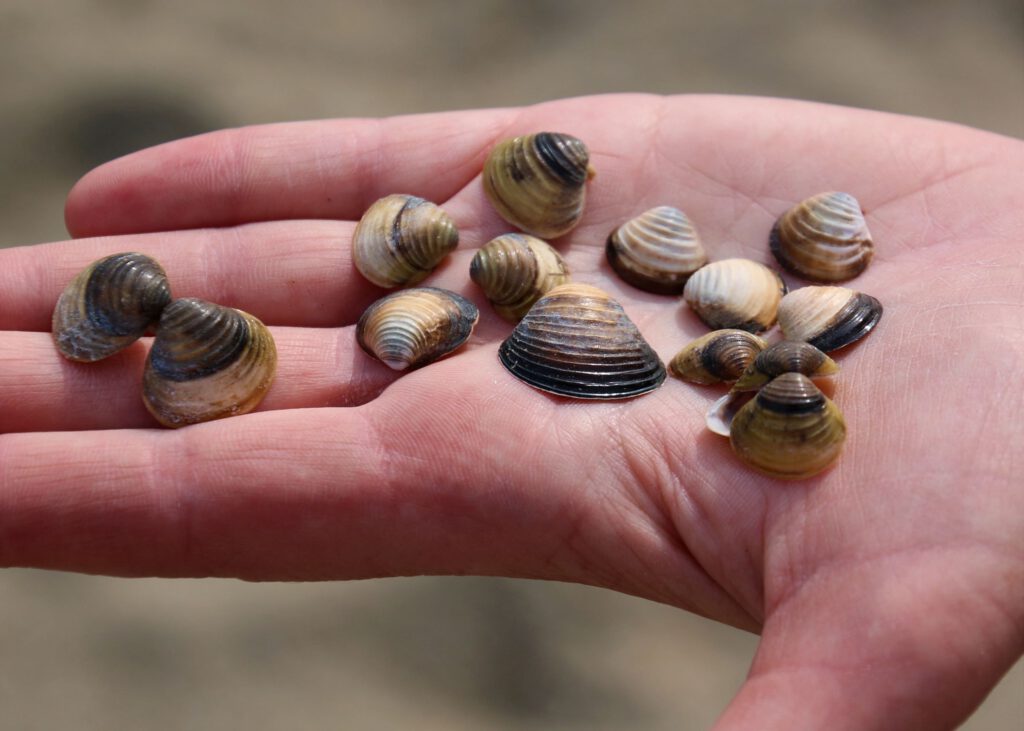
Invasive Clam Shells in Hand: Photo Credit Neil Bousquet
Alias’ : Asian clam, asiatic clam, golden clam, good luck clam Latin Name : Corbicula fluminea Category : Other
Description: Small, freshwater bivalve; Shell is triangular shaped and can be 2.5 cm to 6.5 cm long
Yellow-green to light-brown in color with elevated growth rings
Invasive clams are filter feeders and have a life span of about 1-7 years. They can self-fertilize and reproduce rapidly; a single clam can produce up to 70,000 eggs/year! They are spread by human transport and water currents. They have also been sold commercially for bait, human consumption, and in the aquarium trade.
In British Columbia, invasive clams are under “Provincial Containment”, which means that the species is high risk with limited extent in the province but significant potential to spread. The management objective is to prevent further expansion into new areas, with the ultimate goal of reducing the overall extent.
Juvenile invasive clams may be confused with native fingernail clams (Sphaerium sp.). The shells of fingernail clams can be quite fragile compared to introduced invasive clams. Additionally, fingernail clams tend to have a more pinkish coloration, less pronounced ridges on the shell, and a slightly off-centre umbo, in comparison.
HABITAT
Invasive clams are native to Southeast Asia and parts of central and eastern Australia, Africa, Indonesia, and Turkey. They are found in the substrates of brackish to freshwater rivers, lakes, streams, canals, and reservoirs. They prefer flowing water and have a low tolerance for pollution or near-freezing water temperatures. Invasive clams are not presently known to the Okanagan region, however they are found in some rivers in the Lower Mainland and were recently discovered in two locations of Shuswap Lake in B.C.
IMPACT & RISKS
- Invasive clams can rapidly reproduce with densities reaching 10,000 per square meter
- They can outcompete native species for habitat and food
- Under suitable conditions invasive clams can reach high densities and have the ability to cause clogging of pipes and other structures affecting power plants, irrigation and water supply facilities, and water treatment systems
- They can alter water chemistry and drinking water by favoring algal blooms
- They alter food chains and reduce biodiversity
- They can be transported between bodies of water by bilge and livewell water in boats, on vegetation attached to anchors and trailers, or in sediments left on anchors
PREVENTION & MITIGATION
- Properly clean, drain, dry your boat and equipment before entering a new water body.
- CLEAN off all plant parts, animals, and mud from boat and equipment (e.g. boots, waders, fishing gear). Use a power wash station if available.
- DRAIN onto land all items that can hold water (e.g. buckets, wells, bilge, and ballast)
- DRY all items completely before launching into another body of water
- Raise awareness to avoid the spread of this species in B.C.
- Any suspected transport, possession, sale or release of invasive clams should be reported immediately to the B.C. Conservation Officer Services Report All Poachers and Polluters line: 1-877-952-7277 (RAPP). Any invasive species sightings in B.C. should be reported using the Report Invasives phone app, that is available from the provincial website: gov.bc.ca/invasive-species
Primary source for information: Invasive Clam Invasive Species Alert – Government of British Columbia
